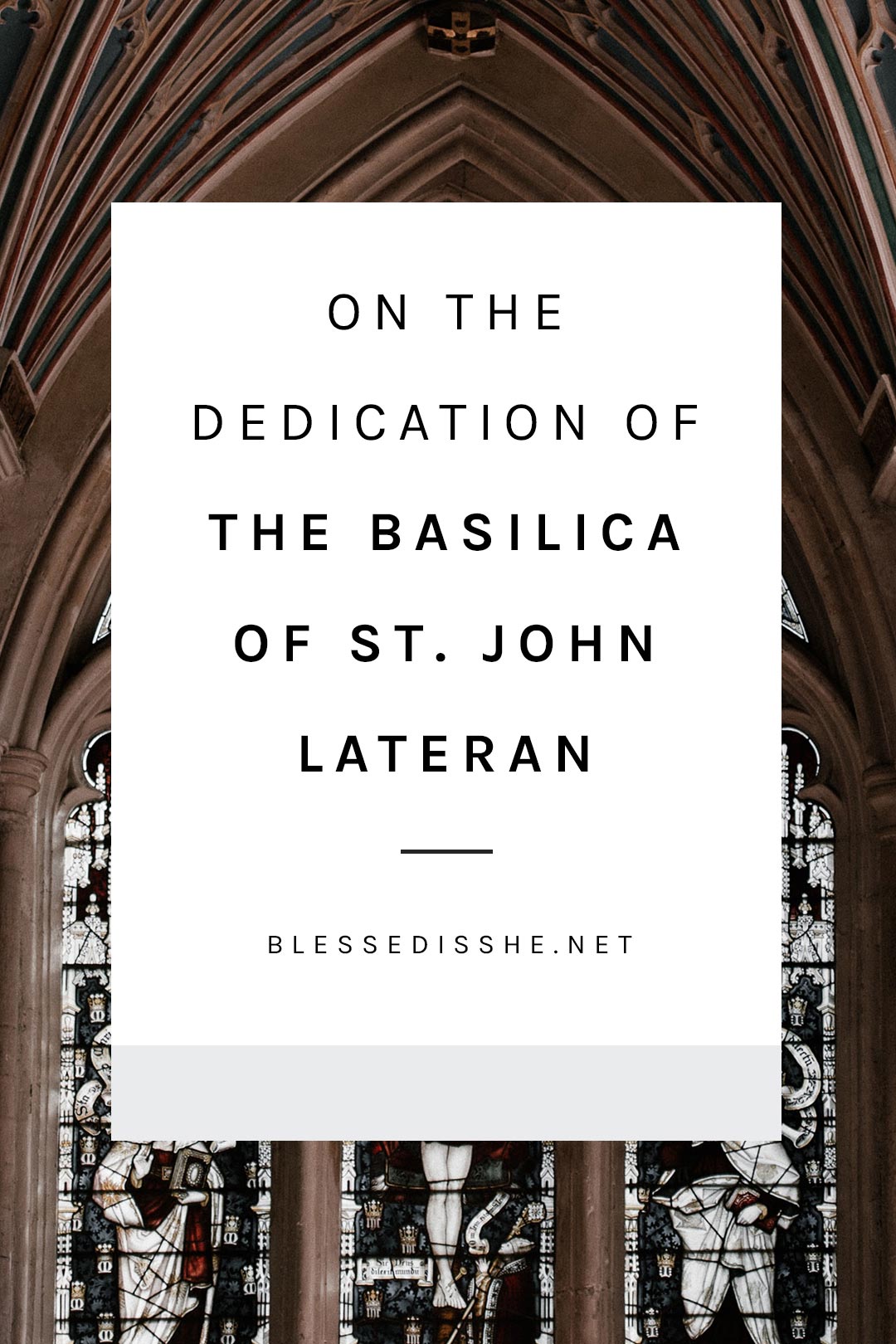
Today is the feast of the Dedication of the Basilica of St. John Lateran! So why do we care so much about a building in Rome that we dedicate an entire feast to it on the Roman calendar?
History and Architecture of the Basilica of St. John Lateran
Upon looking back at the dedication of the St. John Lateran in Rome, Rome’s Cathedral, we owe our attention to the Emperor Constantine, the son of Saint Helen.
In 313, when the Emperor Constantine granted Christians freedom to practice their religion, he had the first church built in Rome: the Church of St. John Lateran. Constantine donated the land for this church, as the land was a gift to him from him from the Lateran family. This is where the Pope lived up until the Avignon Era and today it is the Pope’s Cathedral Church.
As such an important church, St. John Lateran is given several different distinctions: cathedral, archbasilica, and major basilica. A cathedral is where the bishop's seat, or cathedra, is located and it symbolizes their teaching authority. It is also granted the name “archbasilica” for its spiritual, historical, and architectural significance. Finally, it is one of the four major basilicas in Rome, a distinction given to the city’s most highly ranked churches.
What You'll See
On the facade of St. John Lateran you will find inscribed in Latin: omnium urbis et orbis ecclesiarum mater et caput. This translates to “the mother of all churches of Rome and the world.” This church is our mother church, the head of all the churches in the world, making it the church and spiritual home of all Catholics.
The dedication of St. John Lateran was celebrated in 324, and at that time it was dedicated to the Most Holy Saviour. It was not until the 6th century that the names of St. John the Baptist and St. John the Evangelist, the current namesakes, were added.
Inside, along the nave, you will find giant depictions of the twelve Apostles who appear to be supporting the ceiling of the Church and each is holding the symbol of his martyrdom. Above the high altar you will also see reliquaries of ... wait for it ... the bones of the heads of Saints Peter and Paul!
We are “God’s Building”
The readings for this feast day invite us to reflect on the meaning and importance of church buildings.
For the Jews, their life revolved around the temple. The greatest tragedies they ever experienced were the destruction of the temple by the Babylonians, and then again in 70 A.D. by the Romans. The Jews could only hope and pray that one day the temple would be restored to its pure state, and their prayer was answered by Yahweh Himself. Churches today are meant to be that new temple. We are that temple.
In today’s Gospel of John we hear how Jesus went up to the temple in Jerusalem and overturned the tables of the money-changers, angry with them for desecrating the temple with their sales. When they asked Him what sign he could show them to prove the authority with which He spoke, He said He would, “Destroy this temple and in three days I will raise it up” (John 2:19). He fulfilled this prophecy through His bodily temple.
In the Second Reading today, Paul says, “You are God’s building...Do you not know that you are the temple of God, and that the Spirit of God dwells in you?” (1 Corinthians 3:9,16). Jesus foreshadowed the coming of the temple of the body of Christ, the Church, the place where divinity and humanity meet.
Every church building represents this temple which reveals to us the body of Christ. This is what we are celebrating today!
The Importance of Buildings in the Life of a Christian
Pope Emeritus Benedict XVI said that today’s feast:
reminds us of the importance of the concrete buildings in which the community gathers together to celebrate God’s praises. Every community therefore has the duty to carefully guard their holy structures, which constitute a precious religious and historical patrimony. For this we invoke the intercession of Mary Most Holy, so that she might help us to become, like her, a ‘house of God’, living temple of his love.
We can do this through answering our baptismal anointing as priest, prophet and king.
What it Means To Act as Priest, Prophet, and King
Bishop Robert Barron has spoken about how the Archbasilica of St. John Lateran honors St. Peter, St. Paul, and St. John and in so doing it encapsulates the three-fold offices of priest, prophet, and king.
We see the priestly office in St. John, as he was very contemplative and mystical. It it is our priestly responsibility to live a life of prayer and going to Mass.
St. Paul’s office is the prophetic office, as he teaches and preaches and goes out to all nations. We can exercise this role by sharing our Faith with others and proclaiming the love of Jesus Christ.
The third, kingly, office we see in St. Peter, as it represents rule and governance in the Church. We practice the kingly office when we practice self-mastery and self-control in our lives. Bishop Barron speaks of our kingly responsibility as one which requires us to help lead others to the Kingdom of God.
We can start to live these three offices today by simply praying and asking the Blessed Mother to help us become a “house of God,” evangelizing through being a “living temple of His love” which will therefore help us to lead others to experience God’s love and hopefully, in turn, they too will direct their lives towards the Kingdom.
Have you ever been to the Basilica of St. John Lateran?
On the Feast of the Dedication of the Basilica of St. John Lateran #BISblog //Click to tweet






























